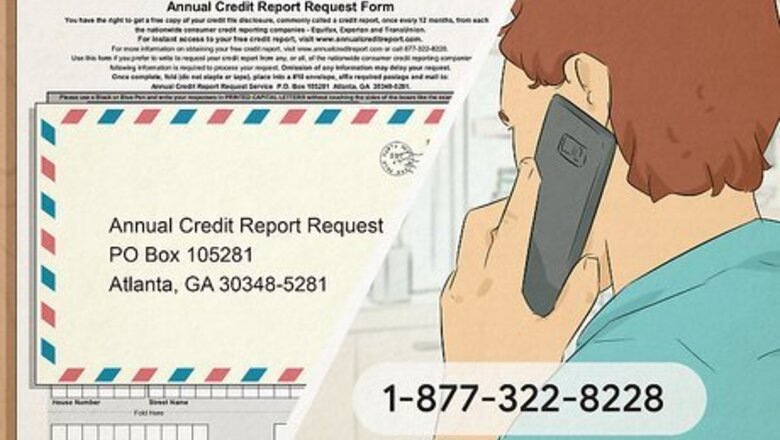
views
X
Expert Source
Jonathan DeYoe, CPWA®, AIF®Author, Speaker, & CEO of Mindful Money
Expert Interview. 15 October 2020.
If you anticipate credit checks for a new job or a new home, you may want to pursue other options to protect your credit.[2]
X
Research source
Placing the Freeze
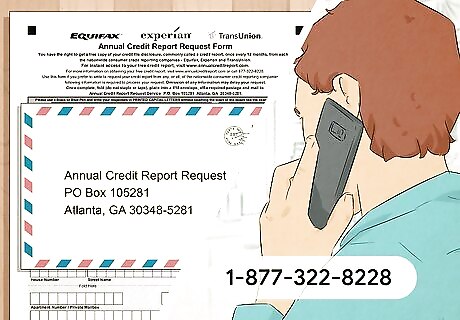
Contact each of the three credit bureaus. There are three main credit bureaus that issue credit reports in your name: Equifax, TransUnion, and Experian. To freeze your credit, you must request a freeze from each credit bureau separately. To freeze your report with Equifax, go to https://www.freeze.equifax.com or call 1-800-349-9960. To freeze your report with Experian, go to https://www.experian.com/freeze/center.html or call 1-888-397-3742. To freeze your report with TransUnion, go to https://www.transunion.com/credit-freeze/place-credit-freeze or call 1-888-909-8872. To place a freeze on your credit report, you'll have to provide basic information, such as your full legal name and Social Security number, to verify your identity. You also may have to answer a series of security questions based on information contained in your credit report, such as the name of the creditor who financed your car or mortgage.

Request a freeze in writing if you are a victim of identity theft. You must submit police reports and other documentation to prove you are a victim of identity theft. This makes it more efficient to send your request in writing through the mail than online or over the phone. The California Attorney General's office has sample letters you can use if you are requesting a security freeze in writing. These letters are available at https://www.oag.ca.gov/idtheft/facts/freeze-your-credit.

Safeguard the PIN or password you receive for your freeze. The freeze may go into effect immediately, but by law must go into effect within 3 days of your request. You'll receive written confirmation of the freeze, as well as a PIN or password for you to use if you want to lift the freeze temporarily or permanently. Store your PIN or password in a secure place. Don't carry it with you in your purse or wallet, or store it on your computer, and don't give it to anyone else.
Thawing the Freeze

Ask what credit bureau will be used to check your credit. When you file a credit, rental, or job application, the company will probably check your credit. Since most places only use one credit bureau, so you can save yourself some money if you know which one they're going to use. Get in the habit of asking if your credit will be checked anytime you sign up for something. For example, if you move, you may have multiple credit checks to rent an apartment, hook up your utilities, and establish new phone or internet service. Insurance companies also typically check credit before writing new policies, and you may face a credit check for some government services.

Apply online for a one-time-use PIN to thaw your freeze for a single company. The process of applying for a one-time-use PIN is similar to the process for thawing the freeze, and the fees may be lower. This allows the company or individual with the PIN to check your credit only once. Your freeze remains in effect for everyone else. Before you apply for the PIN, make sure the individual or company who will be checking your credit understands how to use it and is okay with that method.

Contact the credit bureau where you want to thaw the freeze. The process for thawing your security freeze is roughly the same as the one you completed to initiate the freeze. You typically can thaw the freeze from the same website as the one you used to start it. Typically the easiest way to do this is online, although you may be able to do it over the phone. There should also be information about what to do to thaw your freeze included with your written confirmation of the freeze. Pull out your confirmation letters and follow any instructions there.
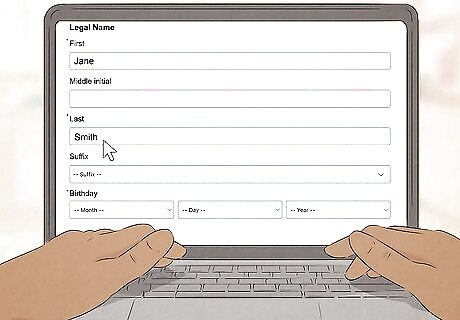
Enter the required personal information online. To thaw your freeze, you'll have to provide much the same information you did when you initiated the freeze, including your full legal name, birth date, and Social Security number. Individual credit bureaus may ask additional information, or take additional steps to verify your identity, such as calling you or sending you a text message.

Specify the dates you want the freeze lifted. While you typically won't be able to start the thaw the same day you request it, you may be allowed to provide an exact date when the thaw should begin and end. If you anticipate multiple credit checks, for example if you're moving, you may want to leave the thaw in effect for a week or two. For individual checks, you typically can get away with only having the freeze lifted for a few days. Check with the individual or company that will be checking your credit to confirm when that check will take place.
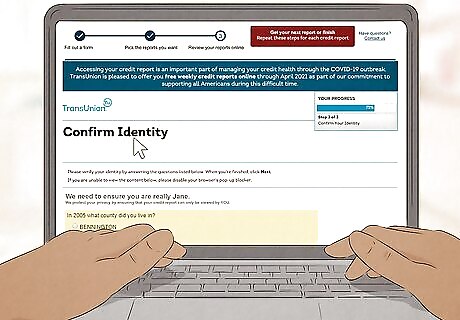
Enter your PIN or password. The last step to confirming your identity is to provide the credit bureau with the PIN or password you were given when the freeze was placed on your credit. Make sure you enter the correct PIN for the credit bureau where you're requesting the thaw. If you've lost your PIN or password, each credit bureau has its own process to recover that PIN or request a new one. Look for a "lost PIN" link and follow the instructions. This may cause further delays.
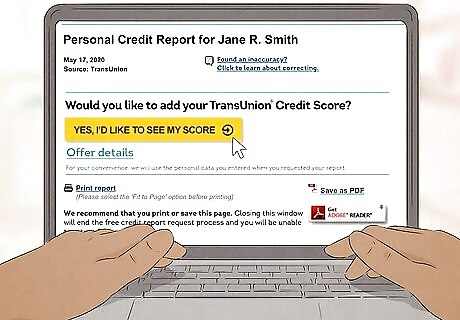
Confirm the freeze has been lifted. Once you request the thaw, you should receive written confirmation that your credit is no longer frozen. During this time, your credit report can be accessed by anyone. If you've requested a one-time-use PIN, your freeze will still be in effect. Only the individual or company with the PIN can access your report, and even then they'll only be able to make one inquiry.
Protecting Your Credit in Other Ways
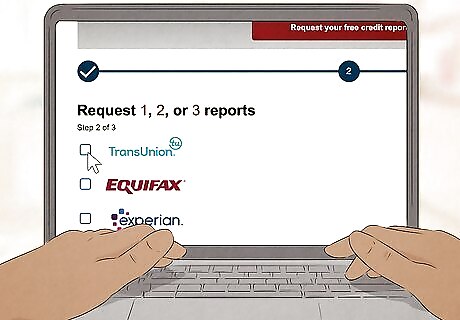
Set a fraud alert if your identity hasn't been stolen. If your information has been compromised, such as by a data breach, but you don't have any specific evidence of identity theft, placing a fraud alert on your credit report may be more appropriate for your situation. A fraud alert is free, and anyone can still check your credit report or issue new credit in your name. However, the alert instructs the creditor to take additional steps to verify your identity before issuing new credit or opening a new account. You only have to contact one credit bureau to place a fraud alert. They are required to notify the other two, who will put a fraud alert on your other files for you. A standard fraud alert lasts for 90 days, and can be extended for a fee. If you are the victim of identity theft, you can make the fraud alert permanent. Having a fraud alert on your report can delay approval in some instances.
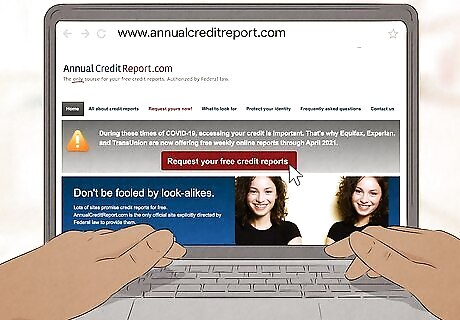
Lock your credit report if you want more versatility. Each credit bureau offers its own product to allow you to lock your credit report so that new creditors can't access it. Unlike a freeze, you can lock and unlock your report at any time. These services may not be free. Unlike credit freezes, you may pay an annual fee, or a smaller monthly subscription fee to maintain the service. Compare the lock programs and their benefits to a freeze, and choose the one that best suits your needs and your budget.
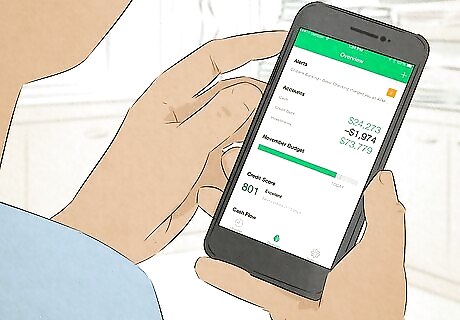
Use an online credit monitoring service to regularly check your credit. You are legally entitled to one free credit report each year. In the meantime, a free online service, such as Credit Karma, can help you keep tabs on changes to your credit report. Many credit card companies offer credit monitoring services for free to their cardholders. Check the website of any credit cards you have to find out what options are available to you. You also may have the ability to set up email or text alerts when there's a major change to your credit report that may require your attention.

Set different passwords for each of your online accounts. Use secure passwords that can't be easily guessed, and choose a different password for every account you have. If your information is lost or hacked, this can limit the damage to a single account. Keep your passwords in a safe place, and never carry them with you. Don't write them on your cards or keep them in your wallet. When you're out in public, take precautions to ensure no one can see you enter a password or PIN. Avoid going onto financial websites or using financial apps on your phone in public places where you can be easily observed.
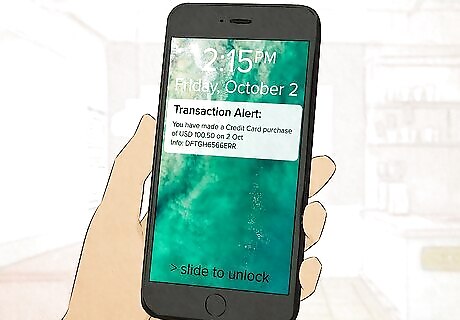
Monitor your accounts and set alerts. Regardless of whether you have a freeze or fraud alert on your credit reports, you need to remain vigilant about your credit report and take active steps to protect it. By monitoring it closely, you can minimize any damage by acting immediately when you notice a problem. There are a number of identity protection programs you can sign up for that will monitor your report and alert you to changes. Some will even take steps to correct any errors or problems – however, you'll have to pay a monthly fee for these services. Before you sign up for a paid service, take a closer look at what's available to you for free. It shouldn't take up a lot of your time to simply monitor your report and accounts on your own. For example, you could schedule 5 minutes a day, or 20 minutes each week to sit down and look at your finances.



















Comments
0 comment